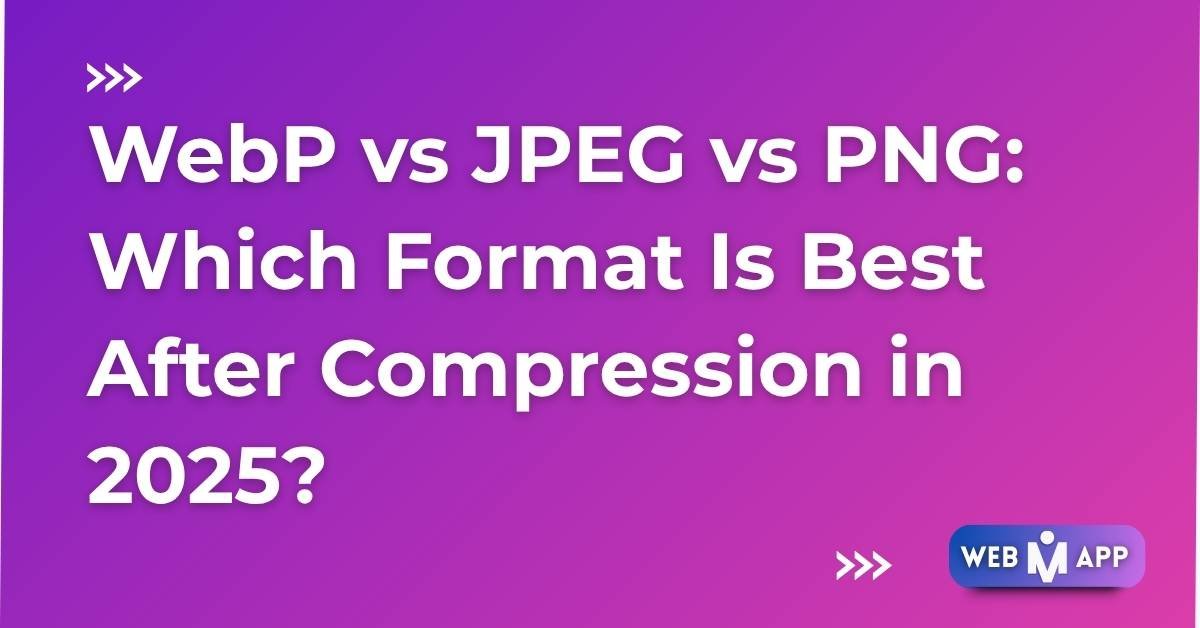Choosing the right image format can dramatically improve your website speed, SEO performance, and overall user experience. In 2025, three formats dominate the discussion — WebP, JPEG, and PNG. Each format has its own advantages, but which one works best after compression? Let’s explore in detail.
🔎 What Is JPEG?
JPEG (Joint Photographic Experts Group) is one of the oldest and most widely used image formats. It’s perfect for photographs and complex images because it supports millions of colors.
- Pros: Small file size, widely supported, good for photos.
- Cons: Loses quality after compression, not suitable for transparency.
🎨 What Is PNG?
PNG (Portable Network Graphics) is famous for lossless compression and supporting transparent backgrounds. It’s often used for logos, graphics, and UI elements.
- Pros: High quality, supports transparency, crisp edges.
- Cons: Larger file size than JPEG and WebP.
🚀 What Is WebP?
WebP is a modern image format developed by Google. It provides both lossless and lossy compression with smaller file sizes compared to JPEG and PNG.
- Pros: Best compression rate, supports transparency, animation, and high quality.
- Cons: Older browsers may have limited support (though shrinking every year).
📊 Comparison Table
| Feature | JPEG | PNG | WebP |
|---|---|---|---|
| Compression | Lossy | Lossless | Lossy & Lossless |
| File Size | Small | Large | Smallest |
| Transparency | ❌ Not supported | ✅ Supported | ✅ Supported |
| Best For | Photos, complex images | Logos, graphics, UI | Websites, blogs, eCommerce |
| Browser Support | ✅ Universal | ✅ Universal | ✅ Modern browsers (95%+) |
| Quality After Compression | Medium | High | High |
🏆 Which Format Should You Use in 2025?
- Use JPEG when dealing with photography-heavy websites where universal compatibility is required.
- Use PNG for logos, icons, or designs that require transparency and sharp detail.
- Use WebP for modern websites where speed, SEO, and storage savings are critical.
In fact, many CMS platforms like WordPress, Wix, and Shopify now recommend WebP by default because it balances size and quality perfectly.
🌍 Why Image Compression Matters for SEO?
Google emphasizes Core Web Vitals and site speed as ranking factors. Compressed images reduce load time, which improves user experience and keeps bounce rates low. Using WebP often leads to higher PageSpeed Insights scores compared to JPEG or PNG.
If you’re managing your website, you can also try our Free Image Resizer Tool to compress your files instantly.
❓ FAQs
1. Does WebP replace JPEG and PNG completely?
Not yet, but WebP is quickly becoming the new standard in 2025.
2. Will using JPEG hurt SEO?
No, but WebP will give you an advantage with smaller file sizes and faster load times.
3. Are PNG files bad for websites?
Not at all. They’re great for transparency but should be used sparingly due to larger size.
4. Can I convert existing images to WebP?
Yes, you can easily convert JPEG/PNG to WebP with online tools or plugins.
5. Which format works best after compression?
WebP wins in most cases, followed by JPEG for photos and PNG for graphics.
📲 Contact Us
Want to optimize your website for faster performance? 📲 Contact us on WhatsApp or email us at info@mrwebapp.com.



Add a Comment